Sweden took the gold medal in the Sprint Relay in the 2022 World Orienteering Championships (WOC) ahead of Great Britain and Norway. The world’s best female orienteer the last years, Tove Alexandersson, decided the relay on the last leg with a fantastic run. Lina Strand, Max Peter Bejmer and Gustav Bergman ran the first three legs for Sweden.
Sweden’s success was due to stable performances by a team consisting of only world class athletes, topped off by Alexandersson’s last leg which was 40 seconds faster than all her competitors. Great Britain’s team did also have excellent team performances, following Sweden until nearly halfway into the last leg, and taking Great Britain’s first ever WOC medal in the Sprint Relay.
The three other pre-race favourites Switzerland, Norway and Czech Republic made a huge mistake at the second leg where they ran into an out-of-bounds area, losing more than a minute and the chance to win the gold medal. A protest was delivered due to this incident after the race, but the jury decided that the teams should not be disqualified as they did not gain time on the incident (and returned the same way as they entered the out-of-bounds area).
Split time analysis
The split times of the common controls throughout the course for the Top 6 (see illustration below) show clearly that the Swedish women had exceptional speed, especially towards the end of their legs – practically deciding the relay there. Similarly, the British men run very strong legs, beating the Swedish leading team on most legs and taking back the 35 seconds Great Britain lost on the first leg. One can also observe Great Britain’s 20 + 40 second mistake towards the end of the last leg, but the gap down to the followers was so large that this did not have impact on Great Britain’s silver medal.
The most notable incident in the split time illustration is the big mistake of Norway and Switzerland on leg 2, losing nearly 80 seconds to the leading team due to running quite far along the railway until noticing the mistake (see below GPS illustration). Great Britain’s Ralph Street was just behind Norway and Switzerland at this time, but managed to avoid the mistake.
Maps and GPS-tracking
See below for the map for the women’s legs (leg 1 and 4) and the men’s legs (leg 2 and 3). Full GPS-tracking provided by TracTrac is available here. Details GPS-based analysis is difficult due to the GPS inaccuracies.
Results
| 1 | 58:39 | ||||||||
| 1. Lina Strand | 14:34 | 1 | 14:34 | 1 | |||||
| 2. Max Peter Bejmer | 15:13 | 6 | +0:20 | 29:47 | 1 | 0 | |||
| 3. Gustav Bergman | 14:54 | 8 | +0:53 | 44:41 | 2 | +1 | |||
| 4. Tove Alexandersson | 13:58 | 1 | 58:39 | 1 | -1 | ||||
| 2 | 59:41 | ||||||||
| 1. Charlotte Ward | 15:09 | 3 | +0:35 | 15:09 | 3 | ||||
| 2. Ralph Street | 14:53 | 1 | 30:02 | 2 | -1 | ||||
| 3. Kristian Jones | 14:38 | 4 | +0:37 | 44:40 | 1 | -1 | |||
| 4. Megan Carter Davies | 15:01 | 5 | +1:03 | 59:41 | 2 | +1 | |||
| 3 | 1:00:20 | ||||||||
| 1. Ane Dyrkorn | 15:16 | 6 | +0:42 | 15:16 | 6 | ||||
| 2. Lukas Liland | 15:56 | 17 | +1:03 | 31:12 | 8 | +2 | |||
| 3. Kasper Harlem Fosser | 14:30 | 2 | +0:29 | 45:42 | 6 | -2 | |||
| 4. Andrine Benjaminsen | 14:38 | 2 | +0:40 | 1:00:20 | 3 | -3 | |||
| 4 | 1:00:26 | ||||||||
| 1. Simona Aebersold | 14:51 | 2 | +0:17 | 14:51 | 2 | ||||
| 2. Joey Hadorn | 16:25 | 23 | +1:32 | 31:16 | 12 | +10 | |||
| 3. Matthias Kyburz | 14:30 | 2 | +0:29 | 45:46 | 8 | -4 | |||
| 4. Elena Roos | 14:40 | 3 | +0:42 | 1:00:26 | 4 | -4 | |||
| 5 | 1:00:28 | ||||||||
| 1. Nicoline Friberg Klysner | 15:17 | 7 | +0:43 | 15:17 | 7 | ||||
| 2. Soren Thrane Odum | 15:22 | 7 | +0:29 | 30:39 | 5 | -2 | |||
| 3. Jakob Edsen | 14:40 | 5 | +0:39 | 45:19 | 3 | -2 | |||
| 4. Miri Thrane Oedum | 15:09 | 7 | +1:11 | 1:00:28 | 5 | +2 | |||
| 6 | 1:00:31 | ||||||||
| 1. Isia Basset | 15:27 | 10 | +0:53 | 15:27 | 10 | ||||
| 2. Adrien Delenne | 15:04 | 5 | +0:11 | 30:31 | 4 | -6 | |||
| 3. Lucas Basset | 15:00 | 10 | +0:59 | 45:31 | 4 | 0 | |||
| 4. Cecile Calandry | 15:00 | 4 | +1:02 | 1:00:31 | 6 | +2 | |||
| 7 | 1:01:14 | ||||||||
| 1. Marika Teini | 15:21 | 8 | +0:47 | 15:21 | 8 | ||||
| 2. Miika Kirmula | 15:51 | 16 | +0:58 | 31:12 | 8 | 0 | |||
| 3. Akseli Ruohola | 14:54 | 8 | +0:53 | 46:06 | 9 | +1 | |||
| 4. Venla Harju | 15:08 | 6 | +1:10 | 1:01:14 | 7 | -2 | |||
| 8 | 1:01:27 | ||||||||
| 1. Hanna Wisniewska | 15:21 | 8 | +0:47 | 15:21 | 8 | ||||
| 2. Michal Olejnik | 15:26 | 9 | +0:33 | 30:47 | 6 | -2 | |||
| 3. Bartosz Pawlak | 15:22 | 13 | +1:21 | 46:09 | 10 | +4 | |||
| 4. Aleksandra Hornik | 15:18 | 8 | +1:20 | 1:01:27 | 8 | -2 | |||
| 9 | 1:01:44 | ||||||||
| 1. Tekle Emilija Gvildyte | 15:27 | 10 | +0:53 | 15:27 | 10 | ||||
| 2. Algirdas Bartkevicius | 15:02 | 4 | +0:09 | 30:29 | 3 | -7 | |||
| 3. Vilius Aleliunas | 15:03 | 11 | +1:02 | 45:32 | 5 | +2 | |||
| 4. Ausrine Kutkaite | 16:12 | 13 | +2:14 | 1:01:44 | 9 | +4 | |||
| 10 | 1:01:53 | ||||||||
| 1. Tereza Janosikova | 15:15 | 5 | +0:41 | 15:15 | 5 | ||||
| 2. Tomas Krivda | 15:44 | 12 | +0:51 | 30:59 | 7 | +2 | |||
| 3. Vojtech Kral | 14:46 | 6 | +0:45 | 45:45 | 7 | 0 | |||
| 4. Jana Stehlikova | 16:08 | 12 | +2:10 | 1:01:53 | 10 | +3 |
 World of O News
World of O News
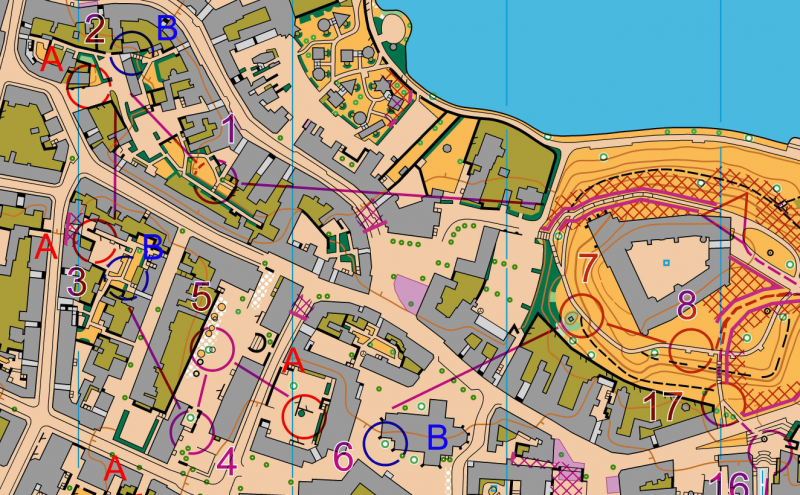

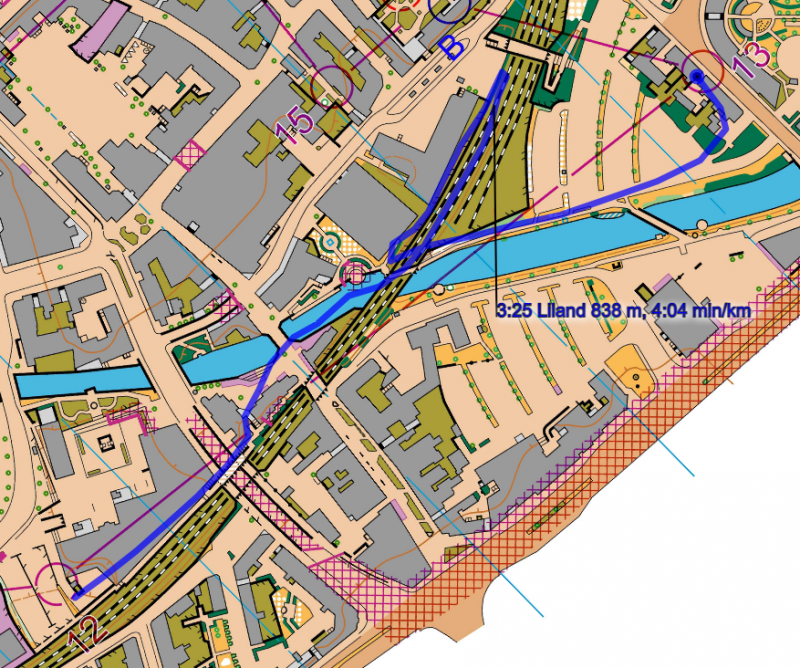
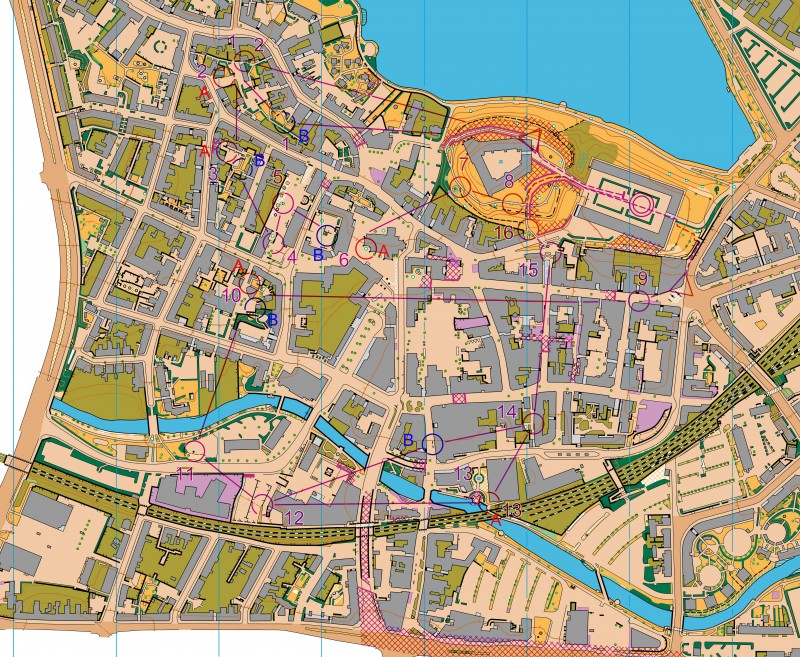
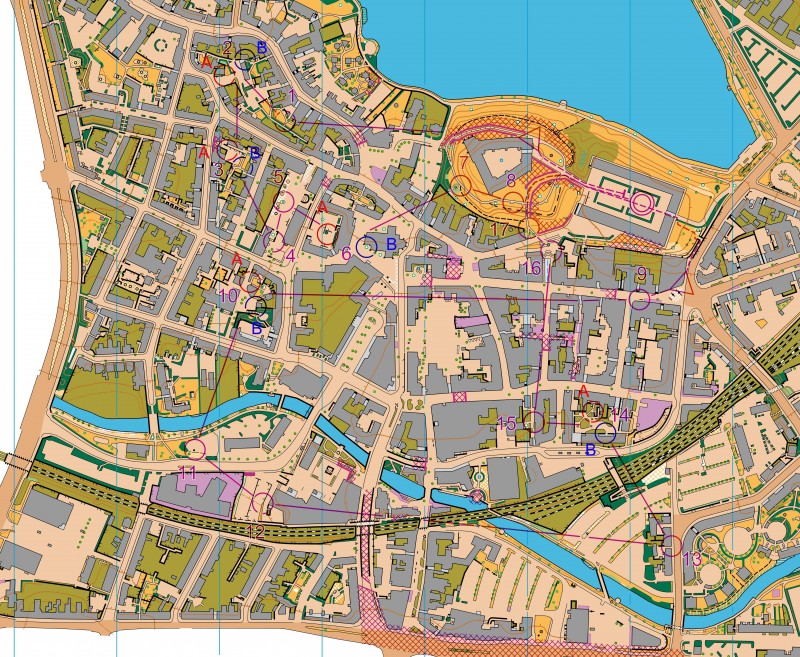
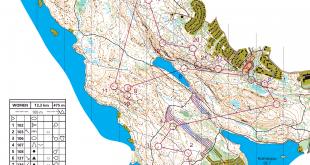
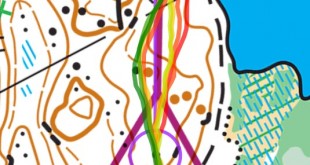
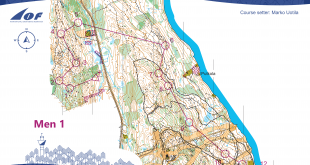
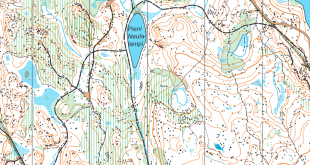
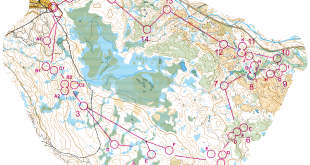
I am wondering about the bad GPS accurracy in 2022… even my garmin instinct gives me a felt better result… am I wrong?
The quality was quite good in my opinion considering the speed of the runners and the environment they where running in (buildings et.c.). This is a limitation in the GPS technique and not much can be done about it (except placing the GPS unit high which they had done).
GPS tracking is a waste of time in urban environments, and smartphone manufacturers realised this a long time ago. This is why your phone will use a combo of GPS and RF signals (wi-fi and Bluetooth) to position you much more accurately when you open up Google Maps. For urban races, we should give up on the specialist GPS units and just strap cheap Android handsets to the runners’ backs.
On their website TracTrac mentions:
” For events with requirements of very high positioning accuracy we offer RTK trackers.”
It would be a good marketing campaign if the Danish company TracTrac would use the GNSS with RTK at the World Cup in Denmark. For years now, we have been working with centimeter accuracy when mapping maps, even when moving quickly and between buildings. This can easily be achieved with the state correction services, but also with private or even with your own reference station near the competition area. Unfortunately, we offer a backward picture, especially in television broadcasting. With the small antenna in the back, a maximum accuracy of 5 meters is definitely feasible, isn’t it?
I think Hadorn, Liland and the others on the second leg doing the big mistake by the railroad tracks still are scratching their heads over the decision made there.
Even if there would have been a legitimate pathway where they now attempted running, which absolutely nothing on the map indicates, it would still have been quite a crap route choice to make – it wasn’t even a course setters trap they went into…
Why are they not disqualified? They entered “forbidden area”…
Same question here. Why should running into a Out of Bound area somehow be ok if no time was gained thereby? It was no trap, the map was utterly clear …
I agree. I should like to know the reasoning why they were not disqualified. Denmark deserves the bronze medal
They came back to the same spot they entered? Nothing gained only time lost?
The reason the jury gave is because they came out the same way and because they lost time instead of gained. Although it doesn’t make sense to me. Symbol states: Olive green shall not be entered. So whatever the jury gave for a reason it’s not valid. Once you enter, your race should be over. Bad image towards people who just started orienteering and who are told olive green is forbidden.
Hear, hear! Olive green regulates the relation we orienteers have with the world around us. This is not only about seconds and results – it is about bearing, fairness, and respect!
They ran there by mistake and went back the same way. They lost quite some time because of that. So no DSQ needed, according to the rules.
I cannot understand Eriks reasoning: if you run over beautiful rose bushes, you will be punished, but if you run over roses a second time (i.e. come back) you will not be punished…
There are no such a rule! Sorry, teams must be disqualified despite the big nations representatives in the jury (with a small letter). You ruin our sport!
I like the jury’s decision. AFAIR, there was a similar situation at a world cup sprint race in Zurich when runners who entered an out-of-bounds area were disqualified but they wouldn’t have been if they had left the oob where they had entered
It is also an issue for future juries at lower level competitions. Life will be very difficult for them if the rules can be ‘interpreted’ or ‘bended’.
Rules say that you MAY be punished for breaking the rules. So it is not mandatory to disqualify someone running in forbidden areas. I think the organizers decided that they did not gain any advantage.
The rules infamously say “you may be disqualified”. But the rules do not say you should return the same way you entered nor that it’s ok if you gained no advantage. I someone crosses my garden by accident, I would want them to exit asap an not return back in their footsteps. This is not about fair play but about our relationship with external stakeholders. We have a lot of land owners and administrators that would be appalled by an outcome like this. (In this particular case, the area seems to be an unimportant wasteland, so no harm done. Maybe not even justified olive green?)
The fact that the olive green area is wasteland might have, and in my opinion should have, significance. Would the jury have reached the same decision, had the runners entered someone’s award-winning garden and trampled down her rare orchids? Hopefully not! The jury’s decision should be based on not only “did the runners gain an advantage?”, but also “did the runners damage the reputation of our sport?”. In this case, the answer to both questions is No, so no DQ is justified.
EDIT: It is new to me that runners may have crossed a fence and run along a railroad track. If they did, then I change my statement to “the runners should have been disqualified”, by same argument: They damaged the reputation of orienteering by doing something stupid, dangerous and illegal.
Happened in world elite races already many times! Few times was even included in the bulletin before the race itself that if the runner enters and backs the exact same way + no time gain, it is ok.
Precedens was already made many years ago.
Maybe time to put it into teh rules officially?
If it is explicitly stated in the bulletin then it is an expected outcome – main part of forbidden areas are for “sprint-O reasons” for example. However, if it is not explicitly stated then that previous decision doesn’t make a precedent for the general case – some forbidden areas are for safety (of property, wildlife and nature, or runners (railroad for example)). Was this loophole given in the bulletin this time?
The problem here is that Norway ultimately got the bronze medal … which they didn’t deserve and should go to Denmark.
Well, Daniel Hubmann won gold in 2018(?) after entering a forbidden area, and backing out again. Even worse then, but this is how the practice usually works in these cases…
It doesn’t matter if they won a medal or not or if they would have 10th, last or second last. I assume the decision was made solely on if any damage was done and if they gained any time (and if they continued the race from the same spot where they went wrong). Doesn’t matter what place they had.
And also, why don’t they deserve the medal? They ran an impressive race and despite losing a lot time with that mistake (human error nevertheless!), still managed to reach a medal. If anything, looks like they might have deserved an even shinier medal, but it was their own fault that they didn’t.
PS! I’ve no personal preference for Norwegians over the Danish. The Danes did give up a good fight!
We were there, watching it. After the race we walked down to the spot behind the car park where the group ran into olive green:
The area is an absolute wasteland, with vegetation-covered fence remains, high grass, broken glass (bottles thrown from the garage?) etc. We took one look and I tried to walk 10-15 m into the area before I decided that “No, the tracking must have been wrong, nobody would even consider running here, and never for half a minute!”
Turned out, that was exactly what they had done!
It is a very strange mistake, however you look at it. It wouldn’t even have been a good route choice if there was a valid passage there…and as you confirm, there wasn’t. Neither on the map, nor in reality.
Terje >> Does it matter if it is a wasteland or not? The map doesn’t show if it is a flowbed or not.
That said, the norwegian and swiss teams did not only go into the “wasteland”, they also passed the fence toward the railway and continued on the railway bank – this is not only forbidden by mapping standard but also etremely dangerous and illegal by Danish law. The railway is the main railway link between Denmark and the European Continent.
I suspect the IOF Sanctions guideline was used to not disqualify the athletes in question. The quideline gives an example of a case where the IOF does not require the organizers to disqualify an athlete:
Quote: “Example 1: In a sprint race, a competitor goes a few metres up a private driveway marked on the map in olive green, then immediately realises the mistake and comes back again.
The competitor has broken rule 17.2 ……. Competitors shall not enter, follow or cross areas, routes or features drawn with the following symbols:………..ISSprOM 520 Area that shall not be entered. But no advantage has been gained (in fact the competitor lost time) and no sanction is required.”
But this is to avoid minor breaches of rule 17.2, not to allow major breaches and breaking of national law. No can argue any of the athletes immediately recognized their mistake (CZE lost 40 secs, NOR 80 secs), and no one can argue they move “a few meters” inside the forbidden area.
I’m not writing this because Denmark did not win a medal – despite the team performing up to their best, their performance was not good enough to earn a medal – my opinion. But I’m writing this as our sport needs to mature. As an expert commentator on danish TV it was more or less impossible to communicate in a sensible way who won the medals. It is hard enough to explain where one can go and not go, and then suddently you can go there any way. It doesn’t make sense. 5 meters up a drive way can be explained and most likely not identified on the GPS – but this was crazy.
Any way good luck to any one to day. May the best man or woman win today – please do not cross forbidden symbols ;-)
It has certainly come a long way since the disqualification-fest that was the woc sprint in France 2021.
IOF Sanctions guideline – is that a public document?
The principle of Fairplay requires us to abide by the rules. If a place is shown as out-of-bounds then it is forbidden for us to enter irrespective of whether it is waste ground, prize gardens or a major rail or motorway. Anyone who goes into a forbidden area should be disqualified – end of discussion.
This sort of thing is giving Orienteering a bad name around the world.
If a football player commits a foul but claims that he/she didn’t mean to do it should the referee not give a penalty ???
The problem with that kind of absolutist approach is that not the whole course can ever be monitored with all different route choices involved. That leads to cruel consequences where someone who stepped in a couple of meters to a yellow-green garage entrance and backed out again, being spotted by personel doing so, gets disqualified. While somebody else doing a worse mistake, but not being seen, advantages from that.
If we had a full VAR-situation over the whole course, to do the comparison with football, I would buy that rule. But we don’t, and it’s impossible to create.
So I think we have to live with flexible jury decisions based on if the mistake was realized, and reversed, and no time was gained.
With that said, the mistake made by several teams in the relay was the biggest I’ve seen in these situations, which as I understand it, involved the danger of meeting a train with very small margins…
A football referee may give a penalty, but whether or not they end the offending player’s participation in the match by sending them off will depend on the severity of the foul, including whether (in the referee’s opinion) the foul was deliberate.
> If a football player commits a foul but claims that he/she didn’t mean to do it should the referee not give a penalty ???
In this case it’s more like a defender accidentally punching the ball into their own goal, thus giving their team a major disadvantage purely through their own error. I’ve seen this happen more than once and, despite it being an obvious foul, I don’t think a yellow/red card was ever given.
> This sort of thing is giving Orienteering a bad name around the world.
Really??? I doubt many people around the world are aware of it let alone have an opinion. Personally I think orienteering has more pressing issues to worry about, but that’s probably a different debate.
So far the discussion hasn’t commented on a few important aspects regarding disqualifying.
First of all – forbidden area must be clearly understandable in the terrain – if it is not, then it should be marked with tape or fence or something similar.
Probably as the organizers did not thought this place might actually be problematic, then tapes or markings were most likely not used. Therefore the fault of entering this area cannot be completely put on athletes shoulders (the mind is a very complex thing under physical stress).
If there was a fence, tape or other clear element to stop runners – then of course disqualifying is appropriate.
Secondly – was there a referee to spot this breaking of the rules? As far as I remember (from somewhere) then you can’t really disqualify someone based on GPS track alone. Maybe TV picture can be used here? Again I believe that organizers had no previous insight to put referees at that spot.
The runners were caught on TV camera running down there. There was also a control marshal standing right at the entrance to the dead-end path, guarding a control that was used on the women’s legs, who presumably could also testify to who went down it.
Thanks for clearing this up for me!
Crazy arguments for orienteering society: “If nobody see the violation than You can doit!” Something from putinoids rethorics “It wasn’t mee! Prove it!”
Probably, I am too old to sense old, good orienteers ethics…
My point is that it is important to actually visualize the rulebrakings in places where it is beneficial for the runner. As organizers will probably never have enough jurys to guard the whole terrain (at least in smaller competitions) then it is necessary to figure out the problematic areas. This also means putting up tapes and fences where necessary.
For other areas (where runners are not capable of gaining time) the mistakes and timelosses are purely the runners own issue.
If this sort of mistake happens to be documented by the jury but is otherwise regarded as not really problematic then it is a bit unfair to disqualify them simply for making this mistake in the area seen by the jury (but not otherwise marked or prioritized by the organizers).